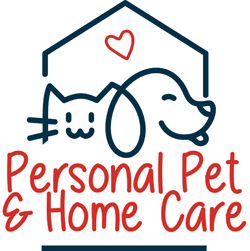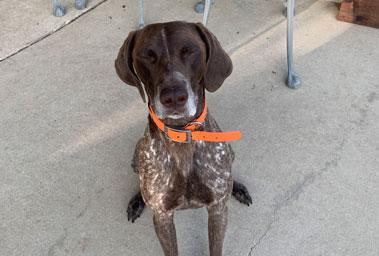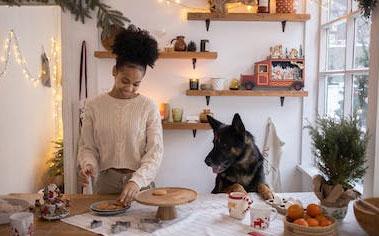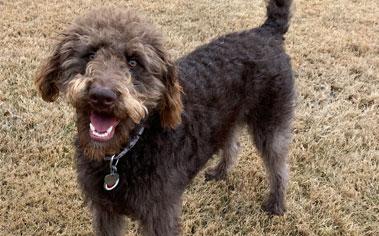Summer usually means more time outside. But higher temperatures could also mean more time at the vet. Protect your pet during summer with these 15 important tips.
While some of these are well know, others might surprise you. To protect your pet during summer and all year long follow these 15 essential tips.
1. Sunshine on My Shoulders Make Me Burn
Skin cancer is the most common form of cancer in dogs and the second most common in cats. Even though fur provides some protection from the sun, you should apply a pet sunblock every 3 to 4 hours to the least-hair-covered spots: bellies on dogs (especially ones who like to lie on their backs) and ears and around eyes on cats, which are also areas where malignant tumors are likely to show up. (No need to apply sunscreen directly on fur.) Use products made specifically for pets, such as Epi-Pet Sun Protector Sunscreen, which is safe for dogs. Remember thtat certain ingredients such as zinc oxide can be toxic to pets such check the labels..
2. No Shave Summer
The guys have no shave November and the pets have no shave summer. Sure it may seem like a good idea to cut their hair sort for the hot summer months, but that hair is a protective shield from the UV rays of the sun. Brush them and keep their hair tangle free provides better circulation and helps regulate body temperature,” says Rene Carlson, DVM, president of the American Veterinary Medical Association. Speaking of brushing check out our article on grooming or the three tips for grooming from Prevention magazine.
3. Use Pet Safe Burn Products
You wouldn’t put just any product on your skin, so why would you do it on your beloved pets? If your pet gets burned, apply a thin layer of pure aloe Vera twice daily to soothe the irritated skin. Again, check ingredients and ask your vet for recommendations. Products link zinc oxide are toxic and if ingested can severely damage their red blood cells to the point they may even require a blood transfusion.
4. Avoid Mid Day Walks
Or even late afternoon walks when the temperature is especially high. This is especially important for dogs with short snouts, such as bulldogs, who can’t pant as efficiently in humid weather due to their narrowed nostrils and windpipes. (Follow these tips for safer hiking with your dog.)
5. Know Your Pets Summer Weaknesses
Just like your fair skinned friends are burn more easily, white or light-colored dogs have a greater risk of sun damage than their dark-furred friends. Short hair pets burn more easily, as discussed above. So this is a no brainer, but as a reminder hairless pets like the Chinese Crested, Xoloitzcuintli and Peruvian Inca Orchid should not only wear sunscreen but be limited as to the time they spend n bright sunlight. Light nosed dogs have less pigment which means higher risk of sun burn and damage, even the thick coated ones. Apply sunscreen to the parts of their body that aren’t covered in fur, like belly and nose. You know that sun bunny friend who is always laying out at the beach or lake tanning, their are animals that have those same qualities. If your pup is a sunbather, they are particularly prone to developing squamous cell carcinoma in on their exposed tummies.
6. Your Car Interior Can Reach 119 Degrees in 10 Minutes
Pets, like children are especially vulnerable to heat and cannot tolerate it as much as adults can. Never leave a pet alone in a car, even for “quick stop. Think cracking a window will help? Think again, cracking the windows may allow for more airflow, but the change is so small that it does not make any real difference. According to a 2005 study by the American Academy of Pediatrics, in 72-degree weather the temperature inside a car can rise 40 degrees within an hour. On a hot day, this can be deadly. (Check out this simple guide to driving with dogs.)
7. A Little Water Goes a Long Way
The Humane Society of the United States states that signs of potential heat stroke include glazed eyes, excessive drooling, a rapid heart rate, dizziness or lack of coordination, fever, lethargy, and loss of consciousness.. Heat stress, which can lead to heart attack or stroke. If your pet does show signs of heat exhaustion avoid ice cold water, which can put them into shock. Instead, move them to a cool place, drape a damp towel over their body, rewet the cloth frequently, give them water and get them to the vet as soon as possible. Unlike people, dogs don’t sweat out excess body heat. A dog’s normal temperature is between 100° and 103°F, so once their temperature approaches 104°F, they have entered dangerous territory (106°F or higher can be fatal). Overweight dogs and those that suffer from medical conditions that cause difficulty breathing or heart problems are especially susceptible. Speaking of water, keep a fresh supply of cool water available for them.
8. Leave the A/C on
Tempted to turn the A/C up when you leave? If it’s too warm for you, it’s too warm for your pet.
9. It’s Called a lifejacket Because it Can Save a Life
Going boating, beaching or hanging out at the lake, put a lifejacket on your dog. A brightly colored life vest not only keeps them afloat in times of trouble but creates a brightly colored beacon so they can be seen by boaters and swimmers. You may want to acclimate them to wearing the doggy lifejacket before heading out to the water.
10. Rips and Currents
Rip currents” may form around low spots or breaks in sandbars, and also near structures such as jetties and piers. A rip current, sometimes incorrectly called a rip tide, is a localized current that flows away from the shoreline toward the ocean, perpendicular or at an acute angle to the shoreline according to NOAA. Rivers can also be dangerous as high waters flowing at quick paces just beneath can drag a pet or person downstream. In addition, the debris flowing in the river can cause additional hazards. If a dog gets in trouble, whether while swimming or fetching a ball, they can be carried away n minutes. Watch out for currents, even if they’re not visible.
11. Lakes and Ponds
Lakes and ponds can and usually have sinkholes. Just like you, if your dog steps in a sinkhole, they may panic (who wouldn’t) and need your help getting to solid footing. Avoid lakes and ponds with blue-green algae, (scummy water and a foul odor). Algae can produce toxins that may cause severe sickness or seizures quickly if the water is ingested. I mean what are you doing around an algae infested pond? Get away from there!
12. Channel Bay Watch and Protect Your Pet During Summer
This may be lost on the Gen Z crowd but there was once a show about lifeguards called BayWatch. Who couldn’t resist a show about the beach and lifeguards? My point is, whenever around a large body of water, like a pool or ocean take on the role of lifeguard like Pamela Anderson or David Hasselhoff and guard your pet. According to the Pet Place, An estimated 5,000 family pets drown in backyard swimming pools annually. There are a number of things parents and pet owners can do to protect their loved ones, including installing “layers of protection,” and considering a pool alarm – “the last line of defense” to prevent drowning tragedies. Teach them how to get out of the pool by using the stairs
13. Plan for Parasites
Summer months are worse for hookworms and heartworms. They can infect your pet through the pads of his feet. Talk to your vet about heartworm and hookworm prevention.Heartgard Plus and Interceptor are two that make flavored tabs for easy administration. They also create a super pill that not only prevents heartworm but protects against flees and ticks as well. If you have ever had a pet with heartworm, you know how devastating it can be. Save your pet, plan for parasites with preventative measures.
14. Are you still using Charcoal Briquettes?
Some dogs are attracted to charcoal briquettes. Their like children, can’t get them to eat green beans but gross blocks of charcoal seem to be an attraction. Charcoal briquettes can not only get stuck in the stomach, they can cause vomiting and even require surgery. Speaking of BBQ, don’t give them the scraps and fatty leftovers. Those fatty scraps can give your pet pancreatitis, causing severe abdominal pain or death. Corn on the cob and peach pits can lodge in a dog’s intestines.. Bottom line, stick with the food you know is good for them. Seriously none of us should be snacking on fatty BBQ scraps. None of us!
14. Protect Your Pet from Plants
Spring and summer are the time for beautiful flowering plants. And yet, some of those can be quite harmful, even deadly to your precious pet. Common backyard shrubs, like Azalies and Red Tips are toxic for dogs and cats if ingested. Drooling, vomiting, diarrhea, heart arrhythmias, or an abnormal heart rate can all occur. Some flowers such as Lillies, and their pollen can cause acute kidney failure in cats.. Injestion of as little as 2 or 3 leave can be fatal. Check compatibility with pets before adding plants to your yard where they will have access . (Symptonms You Should Never Ignore.). And speaking of plants, certain garden plant foods contain insecticides and are potentially fatal to pets. Try composting, its better for pets and plants!
15. Keep Pets Independent from Independence Day away from Pets
Aside from the obvious burn hazard, fireworks are made with chemicals like potassium nitrate. If eaten, fireworks can cause vomiting, bloody diarrhea, seizures, and shallow breathing. Keep your fireworks independent of your pets and clear your yard of debris after shooting off fireworks of any kind.
Protect your Pet During Summer
Summer is a great time for being outdoors and having fun with pets and family. Taking just a few precautions, can mean the difference between a summer to remember and tragedy. It may seem like a lot but nothing mentioned above takes a lot of time and those few minutes of prevention can give you years of joy with your pets. Taking a vacation this summer, hire a professional and loving pet care giver to watch after your home and pets. We have been taking care of pets and homes in Allen, Texas and its surrounding cities Parker and Fairview since 1996. Check out our pet sitter reviews.
Personal Pet and Home Care for Pet care and Home Care in Allen, Texas





